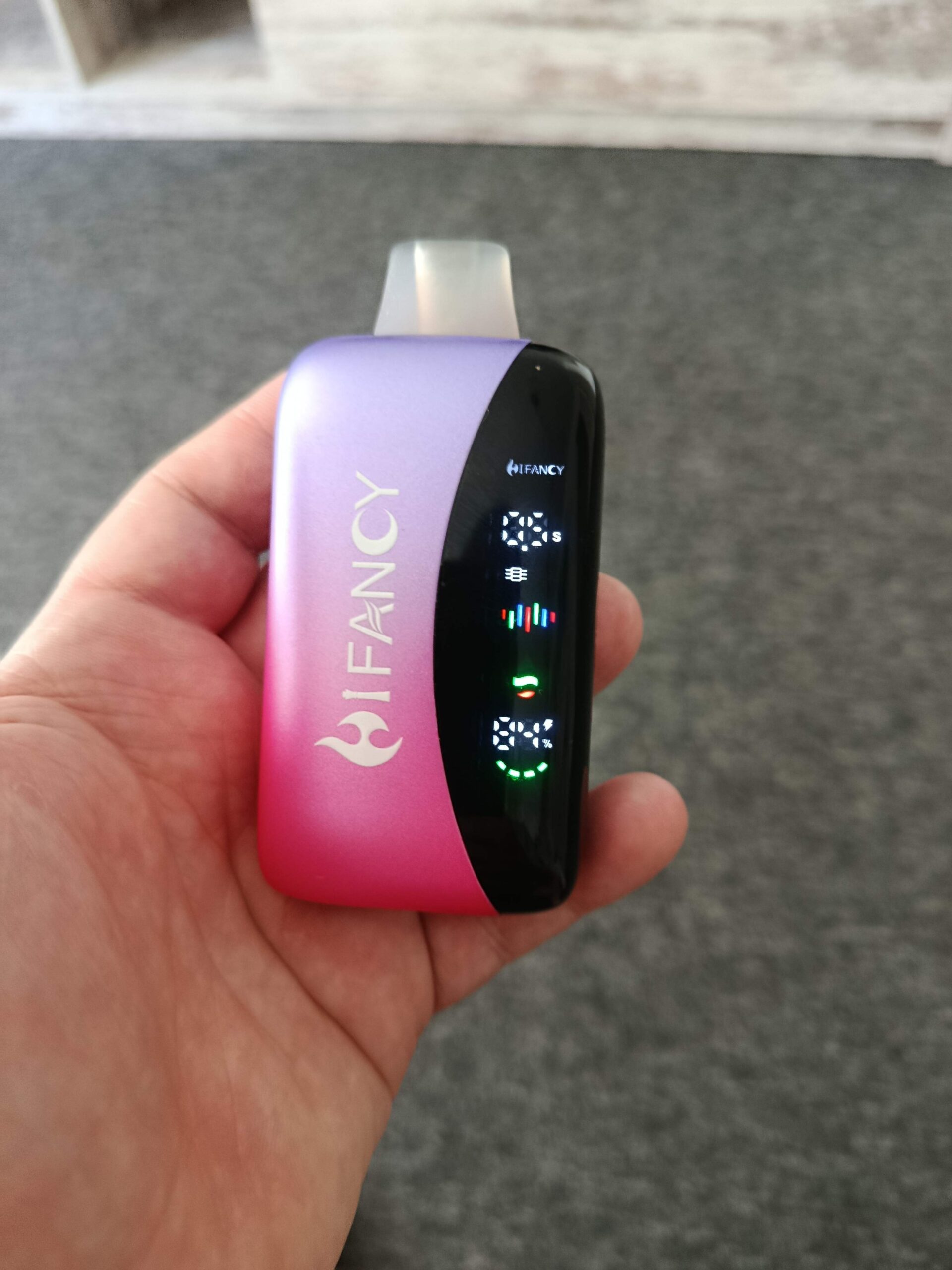Az e-cigarettákból származó másodkézből származó aeroszolok veszélyei

The Hidden Dangers of Secondhand E-Cigarette Aerosol: A Comprehensive Analysis of Health Risks
E-cigarettes, often marketed as a “safer alternative” to traditional smoking, have been found to emit secondhand aerosol containing a complex mixture of toxic chemicals. Contrary to claims that e-cigarette vapor is merely “water vapor,” emerging research reveals that this aerosol poses significant health risks to both users and bystanders, particularly in enclosed spaces.
Toxic Chemical Composition of Secondhand E-Cigarette Aerosol
Carcinogenic Compounds and Heavy Metals
Secondhand e-cigarette aerosol contains multiple carcinogens classified by the International Agency for Research on Cancer (IARC) as Group 1 or 2B carcinogens. These include formaldehyde, acrolein, and tobacco-specific nitrosamines (TSNAs), which are linked to lung, nasal, and pancreatic cancers. Studies have detected formaldehyde levels 20 times higher in e-cigarette aerosol compared to ambient air, while nickel and chromium concentrations—known to cause lung and nasal cancers—often exceed those found in traditional cigarette smoke.
Volatile Organic Compounds (VOCs) and Particulate Matter
The aerosol also contains propylene glycol, glycerin, and flavoring chemicals that break down into aldehydes like acetaldehyde and benzaldehyde upon heating. These compounds irritate the respiratory tract and exacerbate asthma symptoms. Particulate matter (PM2.5 and PM1.0) in e-cigarette aerosol can be 6–86 times higher than in clean air, penetrating deep into the lungs and triggering oxidative stress. A 2024 study found that prolonged exposure to e-cigarette aerosol reduced lung function in mice by 15% after 10 weeks, mirroring early-stage COPD pathology.
Nicotine Exposure and Addiction Risks
Secondhand aerosol delivers nicotine concentrations 10–115 times higher than ambient air, posing risks to non-users, particularly pregnant women and children. Nicotine crosses the placental barrier, increasing the likelihood of low birth weight, preterm birth, and sudden infant death syndrome (SIDS). In children, exposure to nicotine-laden aerosol is associated with a 30% higher risk of wheezing and shortness of breath, as well as impaired cognitive development due to reduced blood flow to the brain.
Respiratory Health Impacts of Secondhand Exposure
Chronic Inflammation and Lung Damage
E-cigarette aerosol induces airway hyperresponsiveness and chronic inflammation by activating NF-κB signaling pathways, which upregulate pro-inflammatory cytokines like IL-6 and TNF-α. A 2023 human trial revealed that non-smokers exposed to e-cigarette aerosol for 30 minutes experienced a 12% decline in peak expiratory flow (PEF), accompanied by wheezing and chest tightness. Over time, this inflammation can lead to irreversible lung damage, including emphysema-like alveolar destruction observed in animal models.
Asztma súlyosbodása és csökkent kontroll
Children exposed to secondhand e-cigarette aerosol are 80% more likely to develop asthma than those in smoke-free environments. For individuals with preexisting asthma, exposure worsens symptoms and reduces treatment efficacy. A 2025 Korean study of 1,200 adolescents found that those exposed to e-cigarette aerosol required 40% more rescue inhaler doses and had twice as many emergency room visits for asthma attacks compared to unexposed peers.
Cardiovascular Risks Linked to Aerosol Exposure
Secondhand e-cigarette aerosol elevates cardiovascular risks by increasing oxidative stress and arterial stiffness. A 2024 meta-analysis linked long-term exposure to a 25% higher risk of hypertension and a 30% increased likelihood of coronary artery disease. The aerosol’s nicotine content also triggers sympathetic nervous system activation, raising heart rate by 10–20 beats per minute and systolic blood pressure by 5–10 mmHg within minutes of exposure.
Thrombosis and Endothelial Dysfunction
E-cigarette aerosol promotes platelet aggregation and reduces nitric oxide bioavailability, impairing endothelial function. Human studies show that non-smokers exposed to e-cigarette aerosol exhibit a 20% reduction in flow-mediated dilation (FMD), a marker of arterial health, after just one hour of exposure. This dysfunction increases the risk of venous thromboembolism (VTE) by 50% in young adults, as demonstrated by a 2024 cohort study tracking 5,000 participants over five years.
Vulnerable Populations at Higher Risk
Pregnant Women and Fetal Development
Nicotine in secondhand e-cigarette aerosol constricts uterine blood vessels, reducing oxygen and nutrient delivery to the fetus. This increases the risk of congenital abnormalities, including neural tube defects and cleft lip/palate, by 15–20%. A 2023 analysis of 10,000 pregnancies found that women exposed to e-cigarette aerosol were twice as likely to deliver babies with low birth weight (<2,500 grams) compared to those in smoke-free environments.
Children and Adolescents
Children’s developing respiratory systems are particularly sensitive to aerosol particles, which can deposit deeper in their lungs due to higher breathing rates. A 2025 U.S. survey revealed that 40% of adolescents exposed to e-cigarette aerosol at home reported chronic cough, compared to 12% in smoke-free households. Additionally, exposure during adolescence doubles the risk of future traditional cigarette use, undermining public health efforts to reduce smoking rates.
Elderly Individuals with Preexisting Conditions
Older adults with COPD or cardiovascular disease face compounded risks from secondhand e-cigarette aerosol. A 2024 study of 2,000 seniors found that those exposed to e-cigarette aerosol had a 35% higher rate of COPD exacerbations and a 50% increased risk of heart failure hospitalization compared to unexposed peers. The aerosol’s particulate matter exacerbates existing inflammation, while nicotine worsens hypertension and arrhythmias.
Szabályozási hiányosságok és közegészségügyi következmények
Despite growing evidence of harm, e-cigarettes remain largely unregulated in many regions. Unlike traditional cigarettes, e-cigarette aerosol emissions are not subject to mandatory testing for carcinogens or particulate matter. A 2025 audit of 544 e-liquid samples found that 22% exceeded stated nicotine concentrations by over 100%, while 16% contained no detectable nicotine despite labeling claims. Such inconsistencies undermine risk communication and expose non-users to unanticipated dangers.
A kockázatok mérséklése érdekében a politikai döntéshozóknak prioritásokat kell felállítaniuk:
- Strict Emission Standards: Mandate third-party testing for carcinogens, heavy metals, and particulate matter in e-cigarette aerosol.
- Ismeretterjesztő kampányok: Counter misinformation by highlighting that “reduced harm” ≠ “harmless,” particularly for vulnerable populations.
- Inclusive Smoke-Free Policies: Extend indoor smoking bans to e-cigarettes, as their aerosol is a proven air pollutant.
The evidence is clear: secondhand e-cigarette aerosol is not a benign byproduct but a serious health hazard. Until comprehensive regulations are in place, protecting non-users—especially children, pregnant women, and the elderly—requires urgent action to limit exposure in public and private spaces.









